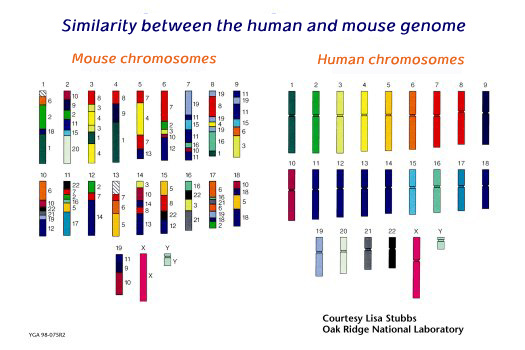A laboratory animal or other organism useful for research. Used also as a model in genomic research. The human genome is not very different from that of the chimpanzee or mouse. The different genomes share many similar genes. Obviously, the differences are very significant, but the similarity is also meaningful. One can actually learn a lot from genetic experiments on other organisms about homologous human genes, i.e. genes whose sequence is similar in the two species.
The mouse is the most popular model organism: it is small, has a rapid reproductive rate, and can therefore provide, within a relatively short time, a pedigree of a number of generations. Mating can be directed and genetic manipulations performed.
A family of mice containing a genetic mutation can be a model for a similar hereditary defect in humans. There is evidence indicating similarity between mouse and human genes.

This figure demonstrated the genetic similarity (homology) of the superficially dissimilar mouse and human species. The similarity is such that human chromosomes can be cut (schematically at least) into about 150 pieces (only about 100 are large enough to appear here), then reassembled into a reasonable approximation of the mouse genome. The colors and corresponding numbers on the mouse chromosomes indicate the human chromosomes containing homologous segments.
